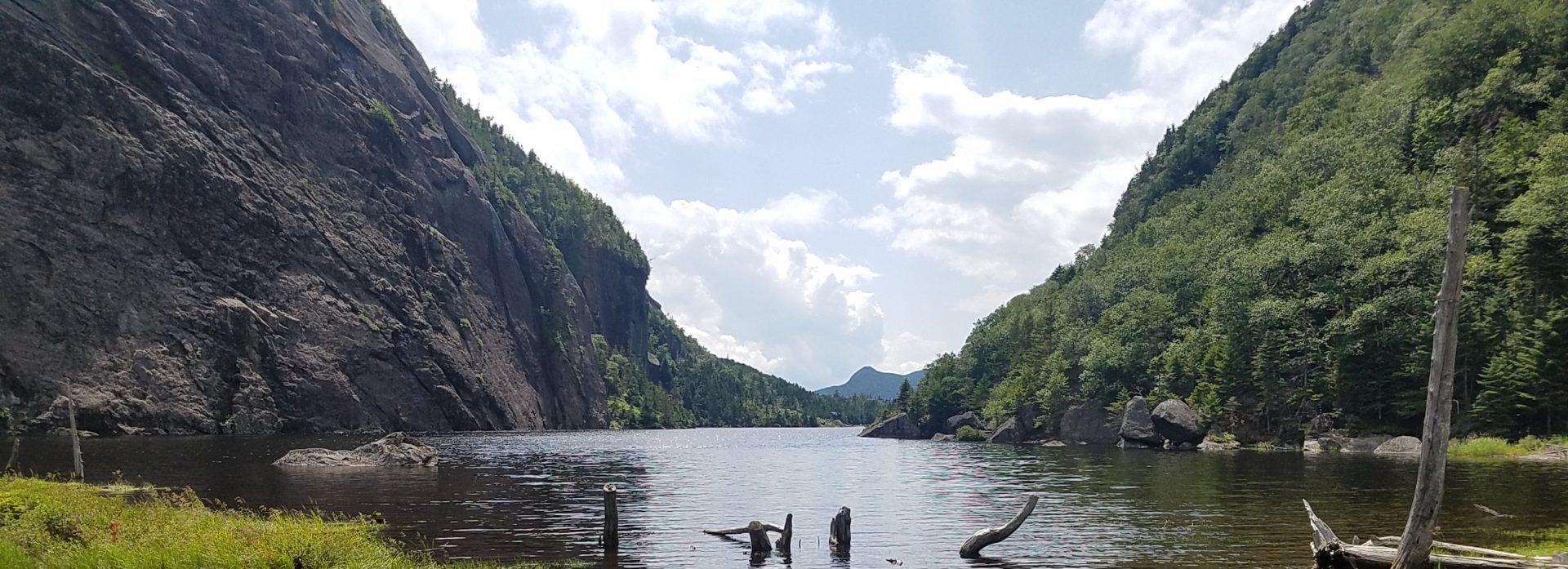Home / Activities / Flatwater Paddling
FLATWATER CANOEING & KAYAKING
See the list of current leaders, here.
1. CERTIFICATIONS
Has fulfilled the general leadership requirements for First Aid & CPR
2. FAMILIARITY WITH EQUIPMENT
Knows the basic differences between canoes & kayaks, and the basic strengths & weaknesses between them.
Is familiar with the layout and important features of canoes and kayaks, including:
- material the hull is constructed of, and the basic differences between them
- bow and stern
- seats
- cockpit of a kayak, including:
– seat
– thigh braces
– backband
– foot braces
- keel and kayak rudder (including how to properly use and stow it)
- thwarts on a canoe
- the general features of hull design that impact stability and maneuverability
Is familiar with canoe and kayak paddles, including:
- sizing
- correct grip
- blade feathering of kayak paddles
Can correctly fit a paddler with a sprayskirt and secure it to a kayak.
Can correctly fit and adjust a PFD (life jacket), and understands that NYS law requires all paddlers to wear one from November 1st through May 1st.
3. BASIC PADDLING SKILLS
Is able to enter and exit canoes and kayaks safely from shore
Is familiar with the following strokes:
- forward and back stroke
- J-stroke (canoe only)
- rudder stroke
- draw stroke
- sweep stroke, both forwards and backwards
Is able to perform a wet exit from a kayak.
Understands the benefits of having paddlers in a tandem canoe paddle on opposite sides of the canoe.
4. SAFETY SKILLS
Knows how to prevent, recognize, and treat hypothermia.
Knows how to, and is able to lead a rescue of swimmers in open water.
- Knows the risks involved in rescue of swimmers
- Is able to quickly asses condition of swimmers and respond accordingly
Knows how to, and is able to lead others in successfully rescuing capsized canoes and kayaks in open water (using a T-rescue, for example).
Is familiar with the risks and benefits of both staying with a capsized canoe and swimming to shore if self-rescue is not successful.
Knows how to signal for help.
Is able to read both a compass and a topographic map and use them to navigate.
5. CANOE AND KAYAK TRANSPORT
Can safely secure, load, and unload canoes kayaks to vehicles:
- with and without roof racks
- with both rope and cam straps
Knows how to safely carry boats over a portage.
6. INSTRUCTION
Is able to provide effective instruction to both beginners and those seeking a flatwater paddling leadership.
7. RECOMMENDED ADDITIONAL SKILLS (OPTIONAL)
Strokes: Become really comfortable using the proper j-stroke form (rotating upper hand forwards and down, as if reading a wristwatch, and using the power face of the blade). It’s a very graceful and efficient stroke once you get it down, and another mark of a skilled canoeist. Other good canoe strokes to know:
- pry
- cross-draw, running-draw (also called a duffek), & sculling draw
- braces, both low & sculling
Learn to solo canoes. It takes good control (see above strokes), but it’s one of the best ways to become a really skilled paddler… and it’s a ton of fun!
Learn to flip-up and portage a canoe by yourself. This can be pretty tough, but it can make portages take a lot less time.
Roll a kayak! This can take time, but it’s one of the coolest things about kayaking. And once you get a solid roll, there’s pretty much no limit to what you can do or where you can go in a kayak.
Get comfortable doing kayak T-rescues & Hand of God rescues on fellow kayakers who’ve flipped and can’t roll so that they don’t have to swim.
Knows differences between PFD types (i.e type I, II, III…) with regards to unconscious victims.
In windy and choppy water, learn to recognize where wind & wave shadows are likely to be, and how to use them to your advantage.
